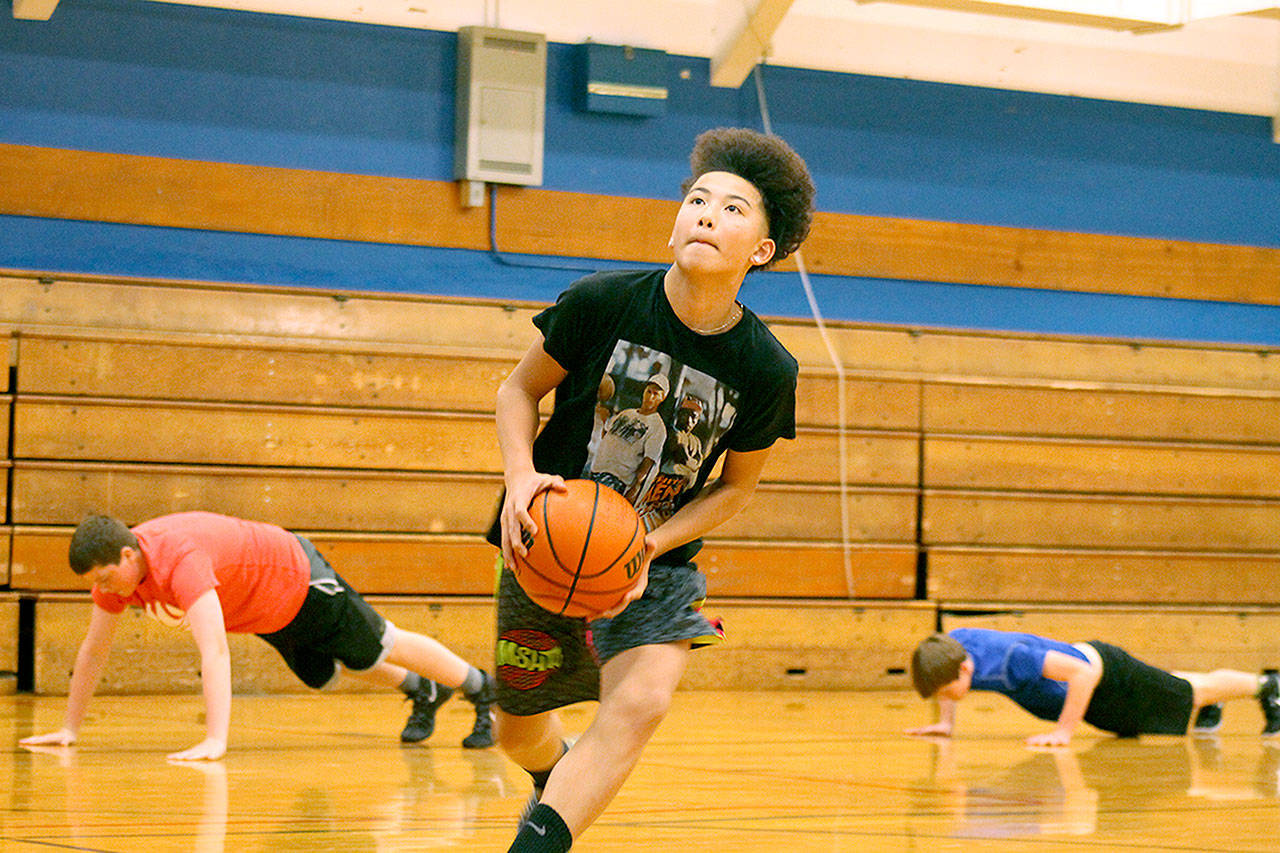A proposal to seismically retrofit one of Langley Middle School’s gyms totaling nearly $1 million received a stamp of approval from the South Whidbey School Board on Wednesday night.
The South Whidbey School District’s pre-disaster mitigation plan will address several structural concerns at the school’s main gym, which is considered the most “at risk” in the event of a natural disaster, such as an earthquake. Most of the project’s total cost of $945,165 won’t fall onto the South Whidbey School District’s lap though; the Federal Emergency Management Agency (FEMA) is covering 75 percent — $708,874 — of the total cost.
The grant is structured to leave 25 percent of the cost to the grant recipient. The district is splitting the remaining bill with the state and Office of Superintendent of Instruction, leaving the district with a bill of $118,145.50 which will be drawn from the $1.7 million capital projects fund. The project is likely to break ground sometime in 2018.
Superintendent Jo Moccia said it was too good of an opportunity to pass up for “an asset that the community owns,” adding that the district’s investment is low compared to the overall cost of the project and how much FEMA is pitching in.
Brian Miller, the district’s maintenance and facilities director, echoed Moccia’s sentiments.
“It’s definitely tough to turn away a project that’s going to have an impact on safety in the district,” Miller said after the meeting.
The project aims to address several structural concerns, including the connection between the roof diaphragm and the walls, the second floor attachment structures and other structural and non-structural deficiencies, according to school documents. Miller said the project is meant to help prevent “failures” that could occur in the event of a large earthquake and the “right kind of shake.” Miller also said the whole idea of the pre-disaster mitigation plan is to identify areas of need within districts, minimize the risk, cost and potential injury to students and the community and make buildings more resilient to earthquakes.
The project came as somewhat of a surprise; in a Record story published in September, Moccia said no seismic retrofitting plans at the campus were in the works. Moccia wrote in an email Thursday morning that seismic retrofitting plans were contingent on the grant being approved and that it was not guaranteed. Miller added that formal acceptance of the grant occurred earlier this month.
The main gym was determined as the most vulnerable facility in the district following a seismic evaluation by Seattle consulting engineer ABKJ and surveys by the state, Washington State University and FEMA. The process began in 2013 when a committee of staff, community members, administrators and a board member began working on a statewide K-12 Facilities Hazard Mitigation Plan, which pertains to actions that can be taken to reduce the risks of natural disasters.
Asked if the building is currently safe for its occupants, Moccia said it’s not been determined as “unsafe for people.”
“The whole point of the study is about earthquakes and not about, ‘Is it OK to be in?’” Moccia said. “It’s about if there were an earthquake, what buildings are most at risk?”
The gym is typically used in the evening for athletics. South Whidbey Middle School’s volleyball team occupied the building during the fall for practices and matches. The middle school boys basketball team is currently using it, while the South Whidbey Parks and Recreation District also utilizes the space on occasion.
Moccia said it is unlikely that the main gym will be available to rent for prospective tenants at the South Whidbey Community Center.
Josh Coleman, head coach of the middle school’s boys basketball team, said he sees no problem in continuing to occupy the building so long as it’s safe.
“If the middle school kids can still be able to utilize the gym, then I’m OK with it,” Coleman said. “I haven’t been told it’s unsafe.”
“I would assume they wouldn’t put kids in that position,” he added.
Olivia Batchelor coached the middle school’s eighth-grade volleyball team in the fall. She’s glad to hear seismic retrofitting is moving forward, but was also curious if the project will disrupt middle school sports and if building a new gym at South Whidbey High School was ever considered. She is of the opinion that it’d be preferable if all middle school students could practice in the same vicinity instead of splitting up between the high school and middle school campuses.
Julie Hadden, a school board director, said if the building was in any danger, students would not occupy it. She also added the district’s investment in seismically retrofitting the main gym is a justifiable use of the capital projects fund.
“We want to maintain that middle school,” Hadden said. “We need to maintain the integrity of it. At some point in time it may reopen as a school. To not pay attention to the facility and not keep it in the best shape we can, we would be derelict in our responsibility as board directors.”



